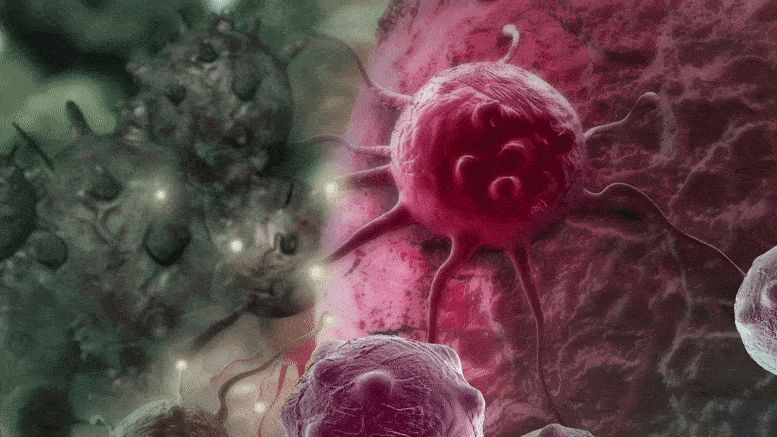
A new study has revealed that the protein gasdermin A induces pyroptosis — a type of cell death — in the skin, the body’s largest organ.
A trigger for ‘cell suicide’ might lead to new skin infection therapies
Every second, one million cells in your body die. That means 2.6 pounds (1.2 kilograms) of cells die in a single day. But there’s no need to be concerned. Cell death is an essential process in the body because it allows undesirable cells to be removed. Many illnesses can be caused or worsened by cells failing to die or dying when they shouldn’t.
Cells can die as a result of damage, however, the majority of cells kill themselves. There are multiple different ways for a cell to die. Some are the result of a systematic, ‘programmed’ procedure. Some cell death procedures leave no sign of the dead cell, while others use substances from the dead cell to engage the immune system.
Researchers at Emory University have identified a mechanism for skin cell death that might lead to new treatments for “flesh-eating” infections, alopecia, hives, and perhaps even melanoma, the deadliest type of skin cancer.
The findings, which were published in Nature, are part of ongoing research led by Christopher LaRock, Ph.D., assistant professor in Emory’s Department of Microbiology and Immunology, and Doris LaRock, Ph.D., assistant scientist at Emory, and funded by the National Institute of Allergy and Infectious Diseases.
According to LaRock, the research shows that a protein called gasdermin A, which his team found, causes pyroptosis, or cell death, in the skin, the body’s largest organ. According to him, this protein acts as an early warning system against bacterial attack by attracting additional immune cells to the area.
“In essence, what we see is that skin cells would rather destroy themselves than be taken over by dangerous bacteria,” says LaRock.
The body depends on cell death to stay healthy — although the process can also get accidentally turned on to cause damage. However, until now, not much has been understood about how the process occurs. The new finding advances scientific understanding of cell death because it clarifies what triggers it in the skin.
LaRock points out that bacteria like Group A Strep (GAS), believed to be the main cause of skin infections like necrotizing fasciitis or “flesh-eating” disease, kill and debilitate hundreds of thousands of people each year as clinicians often rely on debridement and amputation because antibiotics alone fail.
“This research shows how skin cells detect GAS and how it can evade antibiotics by hiding intracellularly, and we hope to target these processes so that we can both save lives and reduce the need for surgery,” says LaRock.
LaRock says gasdermin A, the new immunity protein they found during the study, may play an important role in not just protecting against GAS but other pathogens as well. “We are looking at how we can use our findings to target cell death to help us better treat infections, and also conditions such as alopecia, dermatitis, psoriasis, and keloid, as those are all diseases which involve skin cell death,” he adds.
The study primarily used cells from volunteers to culture human skin in vitro for infection. A mouse model was also used to examine how the skin interacts with immune cells.
A key question that LaRock and his team are investigating is how the body can tell the difference between a microbe that’s a threat and one that’s benign. Scientists currently know a lot about how that process works in the later stages of the disease but less is known at the onset.
“Pathogens like Staphylococcus aureus and GAS complicate our understanding because they blur the line by sometimes being part of the microbiota, sometimes causing mild disease, and sometimes causing severe deadly disease,” LaRock notes. “It’s important for our body to tell the difference between a dangerous pathogen and a harmless one so we can scale the magnitude of our antimicrobial responses appropriately.”
LaRock has been studying pathogens for many years now, and he says the NIAID grant has allowed his lab to look at microbes and factors fueling inflammation. “Some pathogens are just plain deadly because they cripple our inflammatory response, like Yersinia pestis, which killed millions of people in the Middle Ages by bubonic plague. But GAS is different because it deliberately hyperactivates inflammation to seed chaos.”
The researchers are also supported by internal grants at the Woodruff Health Sciences Center and are working with collaborators across the university to expand their observations to other diseases.
Reference: “Group A Streptococcus induces GSDMA-dependent pyroptosis in keratinocytes” by Doris L. LaRock, Anders F. Johnson, Shyra Wilde, Jenna S. Sands, Marcos P. Monteiro and Christopher N. LaRock, 11 May 2022, Nature.
DOI: 10.1038/s41586-022-04717-x









~5000 calories = 1 pound… Loss of 2.6 pounds per day is not logical based on average consumption. I stopped there.
Informational and illuminating article on the cellular death cells In Nature Magazine, May 11, 2022.
It didn’t mention squamous cell carcinoma. I have many spots on my body that have had squamous cell removed but it keeps coming back. My forearms are pretty bad. I’ve had numerous removals and it still comes back.